The American Nations: The United States is Actually 11 Nations (Part 1)
Written by Colin Woodard, American Nations proposed a theory that the United States was actually 11 nations vying for cultural and political supremacy.
Welcome to the first in a three part map series on the “American Nations” theory of cultural nationalities that exist within the United States. Today, I will dive into the theory at a high level. Over the next couple weeks I’ll analyze data on each of the nations and offer my own critiques and opinions on it. Links for each subsequent article will be added here as they are posted.
—
What are the American Nations?
Written by Colin Woodard and published in 2011, American Nations attempts to explain the unique dichotomies between various regions in the United States by suggesting that, as opposed to be one nation, the United States is actually eleven nations. Each nation is in a constant state of competition with the others for cultural, ideological and political supremacy. Some have natural alliances with each other, while others are considered to be rivals. Regardless, the theory goes that each region is more culturally bound to itself that it is to the other nations, much in the same way that the European Union is comprised of 27 nations. And while the United States often speaks as one voice externally, who gets to control that voice - and what the message is - depends on which nation, or group of nations is currently more powerful at the moment.
Suffice it to say, the theory is definitely an interesting one. I won’t get too far into critiquing the theory at the moment, but I see both merits and faults in what Woodard is proposing. At the very least, it’s an entertaining idea that we can use to help explain the diversity and complexity of the United States.
Before I get into each nation and even list them off, I want to begin with a caveat. If you’ve already read Woodard’s book, or plan on reading it soon, you’ll notice I’ve made a few changes. The first is that I’ve opted to portray the nations as being from the United States only. This means that El Norte doesn’t bleed into Mexico, nor the Left Coast into British Columbia. New France also no longer includes Quebec. For this reason I’ve also opted to leave out the First Nations nation that Woodard wrote about. I’ve done this simply because it’s very challenging to gather data on three different countries and use them comparatively. While I love doing this kind of stuff, at some point I just don’t have the time. As such, you’ll also notice that, in the place of the First Nations nation, I’ve included Hawaii and the Spanish Caribbean as their own nations. This technically brings us up to 12 nations in total, which I am cognizant of, but since the theory largely centers around the “11 nations” I’ve opted to continue with that verbiage.
With that out of the way, here are our American Nations (in no order):
Yankeedom
New Netherlands
Tidewater
The Deep South
The Midlands
Greater Appalachia
New France
The Far West
El Norte
The Left Coast
Spanish Caribbean
Hawaii
Yankeedom
Population: 59,238,000
Area: 370,530 square miles
Ideological allies: The Left Coast, New Netherlands, Hawaii
What Woodard has to say:
Yankeedom began with the Puritans (Calvinist English settlers) in New England and spread across upper New York, the northern parts of Pennsylvania, Ohio, Indiana, Illinois, and Iowa, into the eastern Dakotas, Michigan, Wisconsin, Minnesota, and the Canadian Maritime. The area values education, communal decision-making and aims at creating a religious utopian communal society to be spread over other regions.
New Netherlands
Population: 17,632,000
Area: 5,297 square miles
Ideological allies: The Left Coast, Yankeedom, Hawaii
What Woodard has to say:
New Netherland, established by Dutch colonists in the 17th century, is now Greater New York City, as well as the lower Hudson Valley, northern New Jersey, western Long Island, and southwestern Connecticut. The area promotes liberal, multicultural values, capitalism and the freedom of the press.
The smallest nation by area size, but while I don’t have the exact numbers just yet, I’d wager New Netherlands is the densest in terms of population by far.
Tidewater
Population: 12,440,000
Area: 46,321 square miles
Ideological allies: Greater Appalachia, The Deep South
What Woodard has to say:
Tidewater was founded by Cavaliers (Royalists during the era of the English Civil War and Stuart Restoration), and consists of Virginia, Maryland, southern Delaware, and northeastern North Carolina. Has cooperated often with Deep South and Greater Appalachia. Together with George Washington, many of the Founding Fathers came from here. Appalachian mountains cut its expansion westwards, and the region is now being overrun by the Midlands.
I’m actually unsure if Washington D.C. should be included in Tidewater. According to Woodard, Tidewater is ideologically aligned with The Deep South, but Washington D.C. is far more progressive.
The Deep South
Population: 45,268,000
Area: 318,785 square miles
Ideological allies: Tidewater, Greater Appalachia
What Woodard has to say:
Deep South was settled by former Anglo-American West Indies plantation owners in Charleston, and spread to encompass South Carolina, Georgia, Alabama, Mississippi, Florida, Louisiana, western Tennessee, and the southeastern parts of North Carolina, Arkansas, and Texas. It values old Greco-Roman enlightened, civilized, idle slave society, free-markets and individual freedoms. It has fought centuries with Yankeedom over the dominance of North America, such as in the Civil War and the "culture wars" started by the civil rights movement since the 1960s.
The Midlands
Population: 35,785,000
Area: 301,087 square miles
Ideological allies: The Far West
What Woodard has to say:
Midlands, founded by English Quakers followed by the Pennsylvania Dutch, consists of southeast Pennsylvania, southern New Jersey, northern Delaware and Maryland, central Ohio, Indiana and Illinois, northern Missouri, most of Iowa, and the eastern halves of South Dakota, Nebraska, and Kansas, as well has southern Ontario. The border city of Chicago is shared with Yankeedom and St. Louis with Greater Appalachia. Midlands promotes peaceful values and has often been in several elections the great swing-region between Yankeedom and the Southern Nations. According to Woodard it is culturally the most "American" of the nations.
Woodard actually doesn’t ascribe The Midlands and The Far West as ideological allies, but I feel they share enough similarities to make it the case here. In particular the western end of the Midlands feels very much like the Far West to me.
Greater Appalachia
Population: 59,774,000
Area: 547,005 square miles
Ideological allies: The Deep South, Tidewater
What Woodard has to say:
Greater Appalachia was populated by waves of immigrants that Woodard calls Borderlanders, from the borders of Northern Ireland, northern England, and the Scottish lowlands. Greater Appalachia covers the highlands in the south United States, the southern parts of Ohio, Indiana, and Illinois, the Ozarks of Arkansas and Missouri, eastern Oklahoma, and Texas Hill Country. Its fighting spirit is embodied by figures such as Davy Crockett, Andrew Johnson and Douglas MacArthur.
New France
Population: 3,047,000
Area: 19,100 square miles
Ideological allies: Not sure
What Woodard has to say:
New France began in 1604 with an expedition from France led by Pierre Dugua. It grew to encompass the lower third of Quebec, north and northeast New Brunswick, and southern Louisiana.
It’s a little challenging to discuss New France without its Canadian parts. Woodard relies heavily on those areas to engage in the discussion of New France and we don’t have that luxury here. Still, the southern parts of Louisiana are definitely unique in their own way. I’d argue they’re culturally and significantly unique enough from their French Canadian roots as well.
The Far West
Population: 29,531,000
Area: 1,636,445 square miles
Ideological allies: The Midlands
What Woodard has to say:
Far West is the interior of the United States and Canada west of the 100th meridian west between El Norte and First Nation. It includes the interiors of California, Oregon, and Washington, much of British Columbia, Alberta, Saskatchewan, Manitoba, and Alaska, part of Yukon and Northwest Territories, the west halves of the Dakotas, Nebraska, and Kansas, as well as Idaho, Montana, Colorado, Utah, and Nevada. The region has been "imperialized" by other nations, such as Yankeedom and Deep South with large mining and infrastructure projects. The Mormon Enclave has been its politically most influential group.
Interesting note: The Far West is the start of many of the the United State’s major rivers (Snake River, Missouri River, Colorado River, Arkansas River, Rio Grande). The Columbia doesn’t start there but a long portion of it runs through The Far West as well.
El Norte
Population: 34,062,000
Area: 221,547 square miles
Ideological allies: Potentially Spanish Caribbean
What Woodard has to say:
El Norte is where the oldest European subculture in the United States is found, from the early Catholic Spanish settlers in the 16th century. Later augmented by Anglo-Americans from Deep South and Greater Appalachia, it includes south and west Texas, southern California and its Imperial Valley, southern Arizona, New Mexico, parts of Colorado, and the Mexican states of Tamaulipas, Nuevo León, Coahuila, Chihuahua, Sonora, and Baja California.
Woodard includes much of northern Mexico in his theory. Again, for data reasons, I’m just looking at the United States.
The Left Coast
Population: 18,405,000
Area: 105,508 square miles
Ideological allies: New Netherlands, Yankeedom, Hawaii
What Woodard has to say:
Left Coast was predominantly settled by Yankees from New England, with a huge influx from Greater Appalachia and countries around the world when gold was discovered. It encompasses the land between the Pacific Ocean and the Pacific Coast Ranges from Monterey, California to Juneau, Alaska, containing parts of California, Oregon, Washington, British Columbia, and Alaska. It is an ideological ally with Yankeedom and El Norte.
Quick note: obviously British Columbia and Vancouver in particular would be included here given their closeness to Washington and Seattle, but again to analyze data for next week’s post, I’ve opted not to include them.
Spanish Caribbean
Population: 11,407,000
Area: 16,890 square miles
Ideological allies: Potentially El Norte
The Spanish Caribbean is not included in any meaningful way in American Nations and so no quote from Woodard is provided. I’ve opted to include them because it’s a significant cultural region of the United States. I’ve also opted to include southern Florida with Puerto Rico. There may be issues with that given the presence of Cuban-dominated culture in southern Florida, but I think there are enough Caribbean ties to make it work.
I’ve also have them as a potential ideological ally of El Norte. Make no mistake. Norteno culture and Caribbean culture are very different, but the shared language of Spanish binds them together in the same way English binds the USA and UK together.
Hawaii
Population: 1,455,000
Area: 6,423 square miles
Ideological allies: The Left Coast, Yankeedom, New Netherlands
Hawaii is not included in any meaningful way in American Nations and so no quote from Woodard is provided. Hawaii is an interesting nation otherwise, though, and I’m surprised Woodard left them out. After all, Hawaii was a modern nation (for its time) when the United States forcibly annexed it in 1898 and its Hawaiian culture is still very dominant on the islands.
—
Now that you have an introduction into each of the nations, next week I’ll explore more data behind each nation and how each compare to one another. Some data I’ll be exploring are: GDP, population density, major employers, and more! Stay tuned!






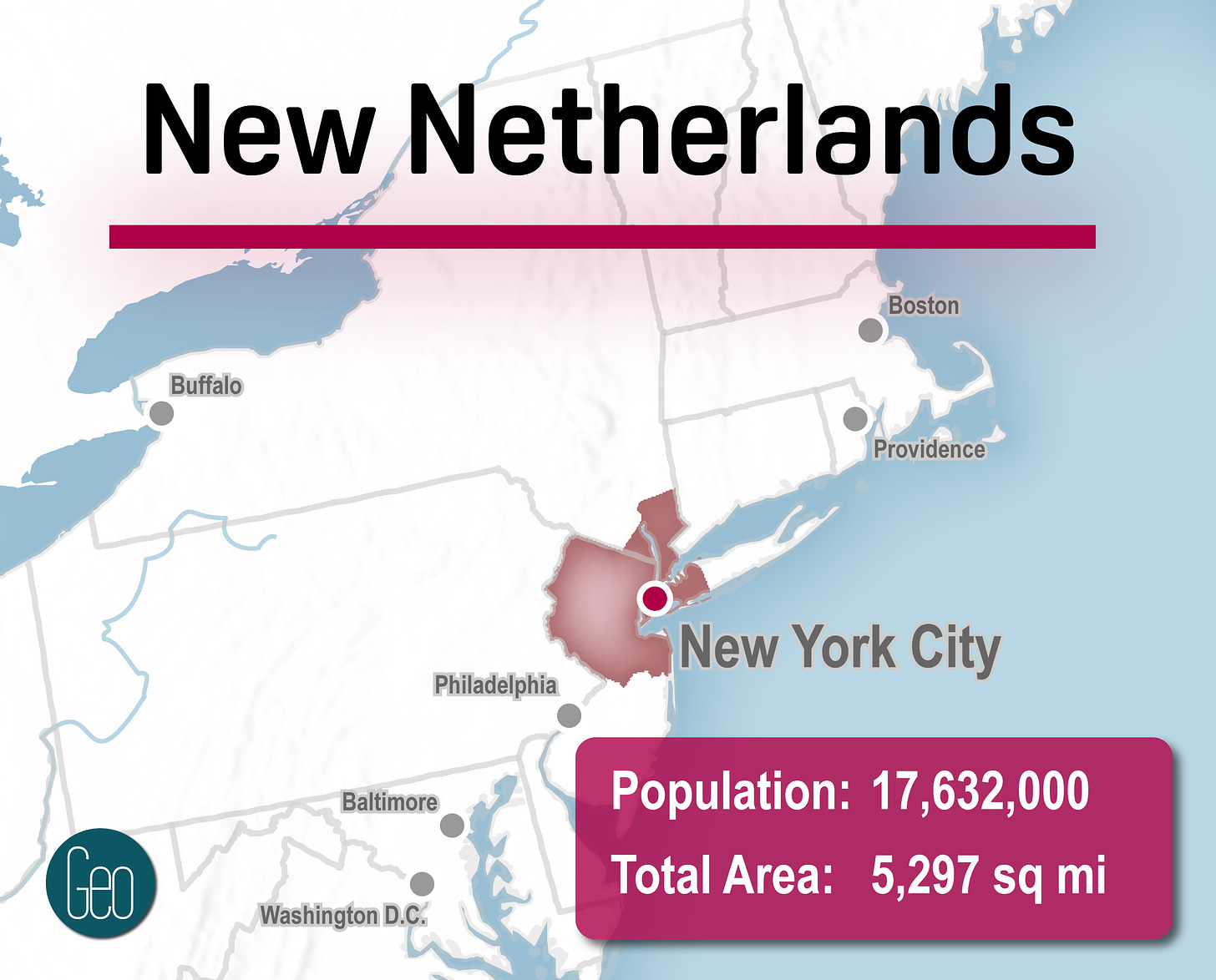
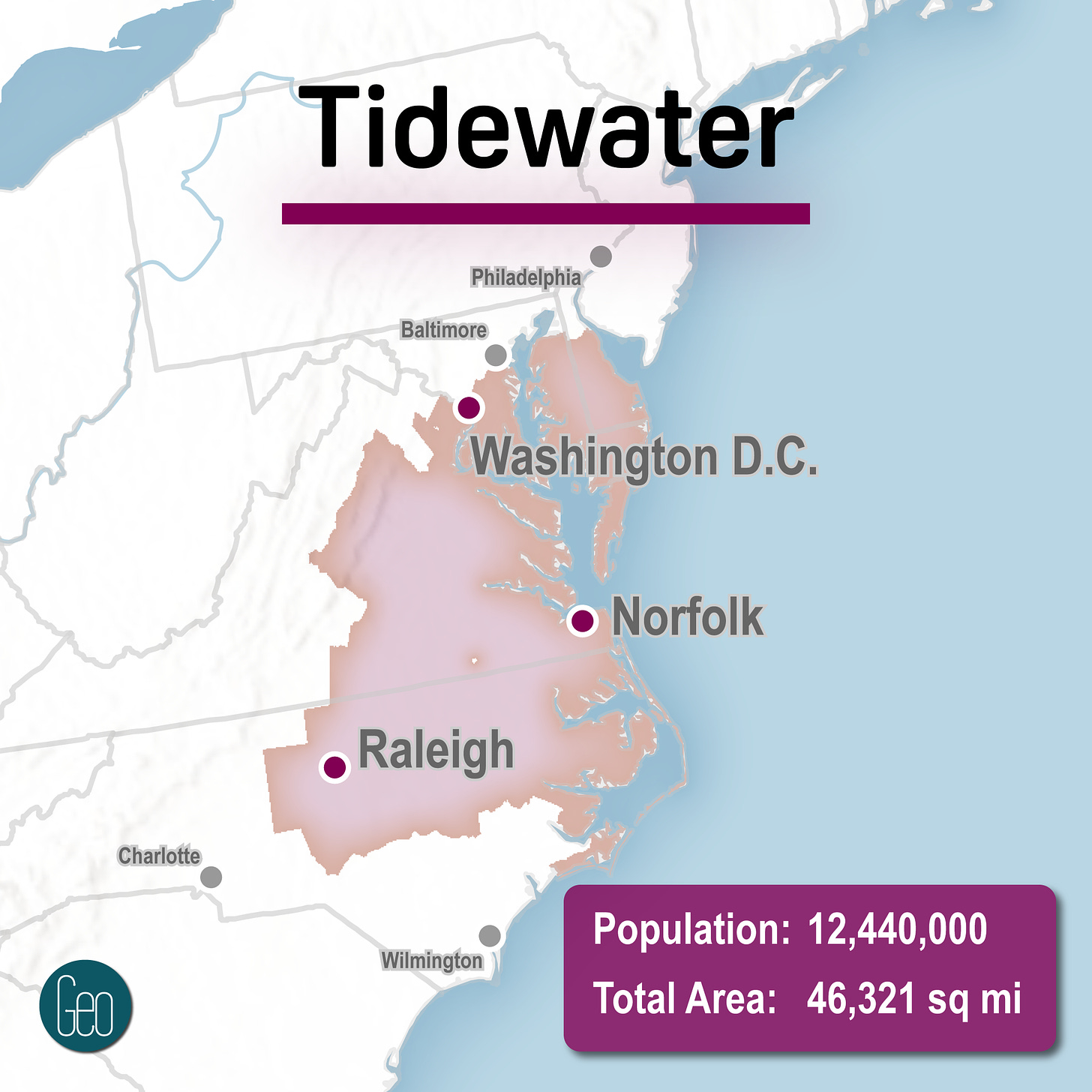



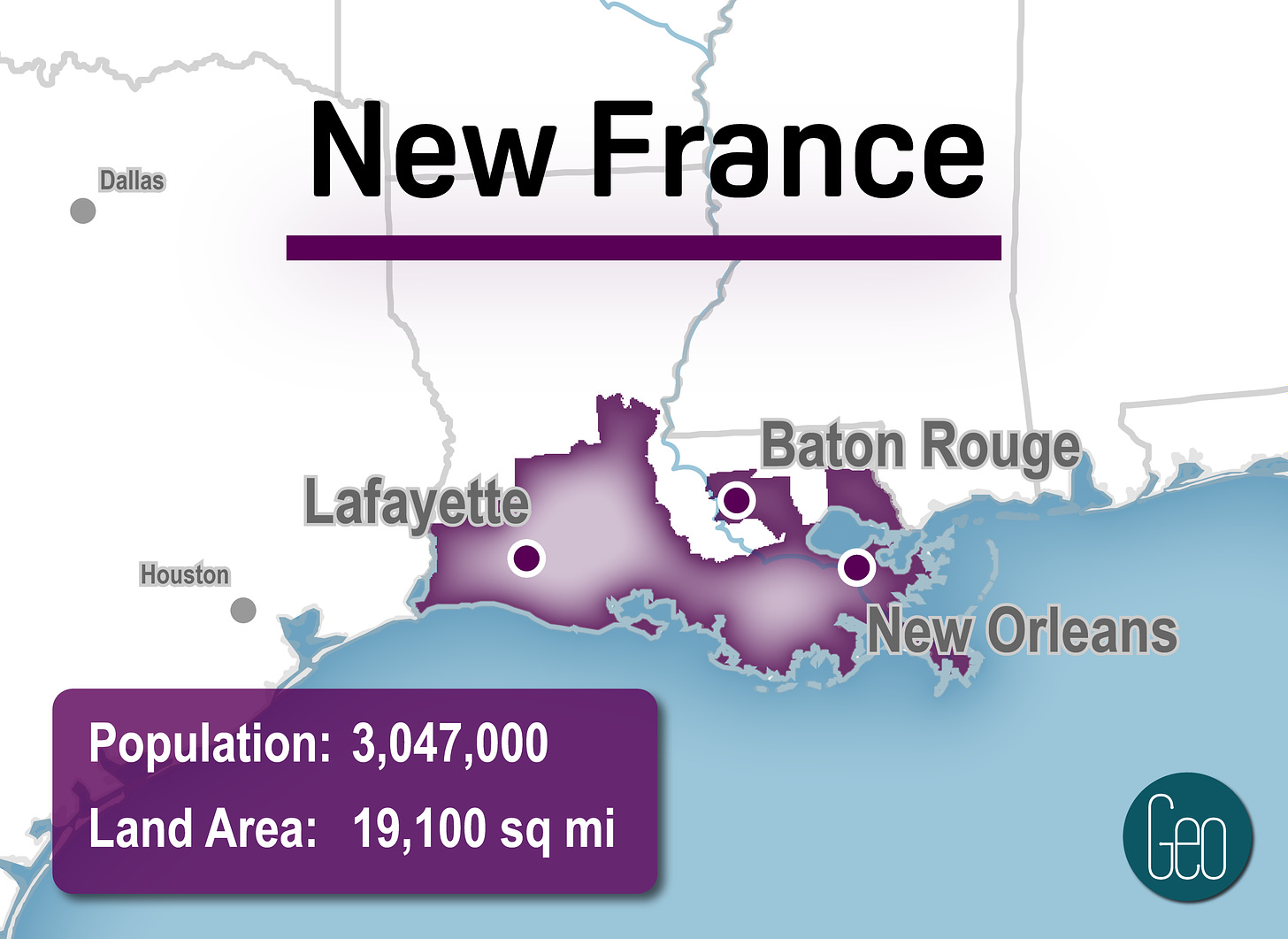
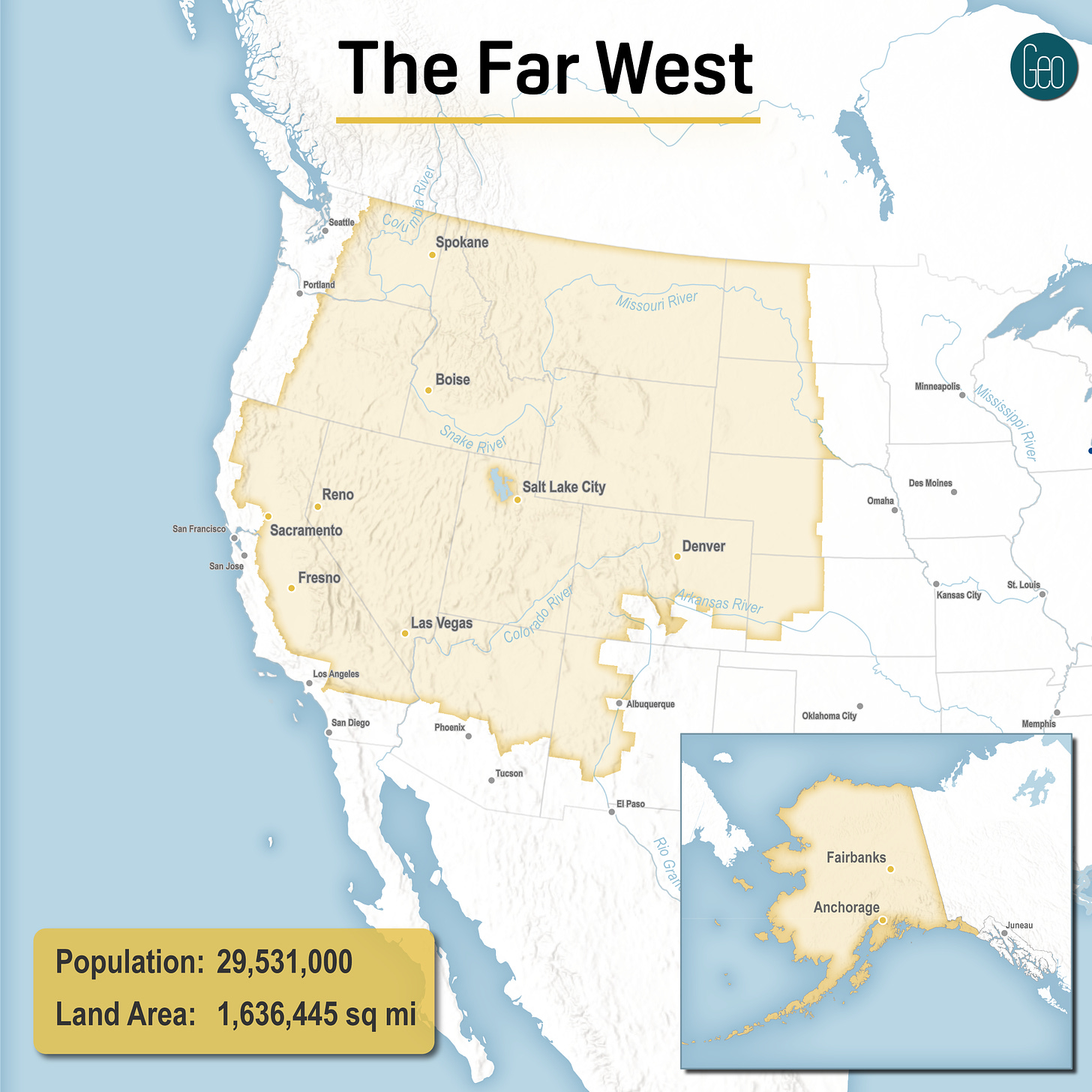



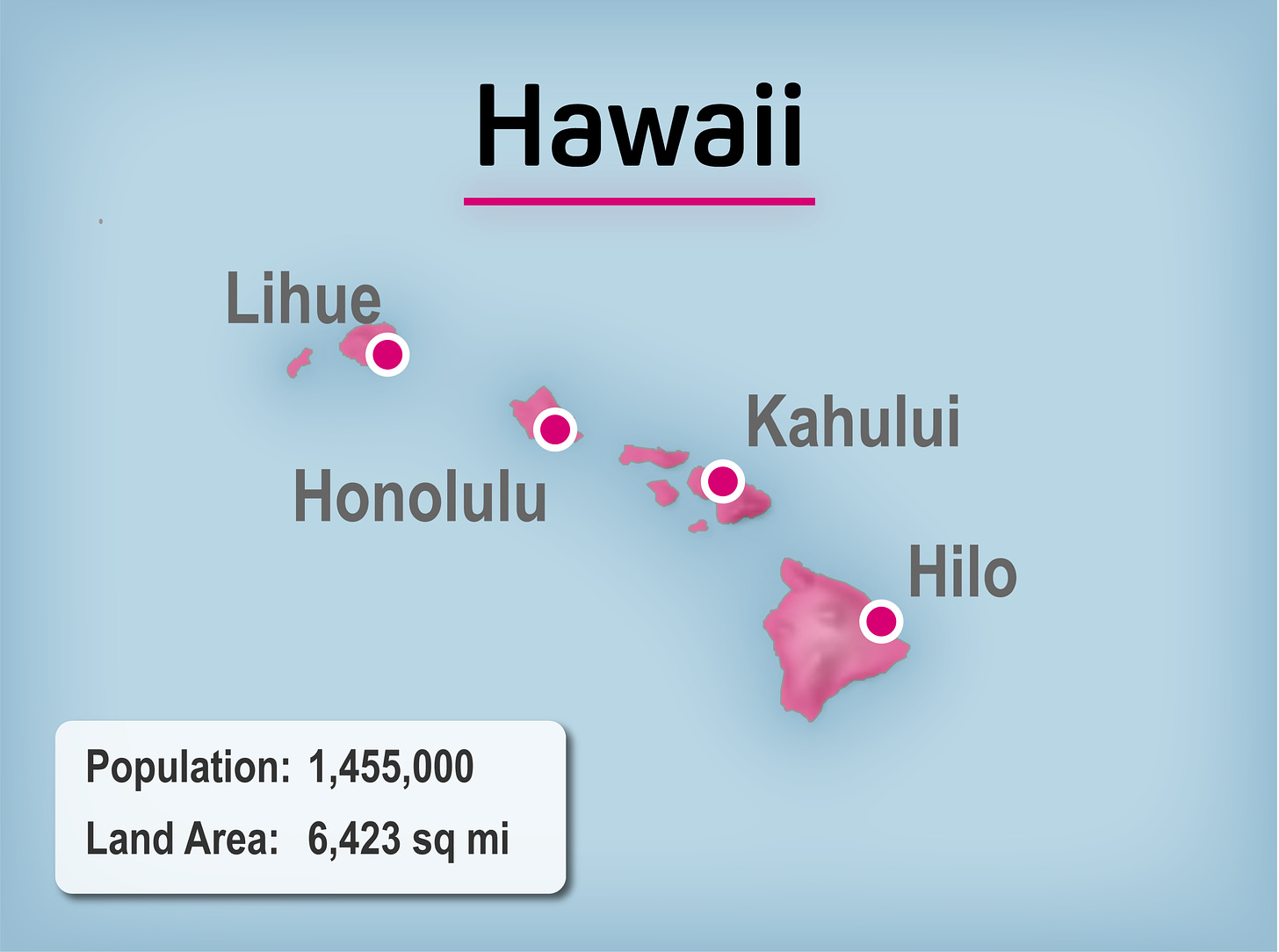
These maps are excellent! The best I've found for the American Nations book. Thank you for including the cities! I am working on a Podcast episode explaining American cultures for authors in other countries. Would it be ok if I included some of these maps in the blog version of the episode?
Given that Hawaii isn't strictly North American, it's not surprising that a book taking a North American perspective would omit it.